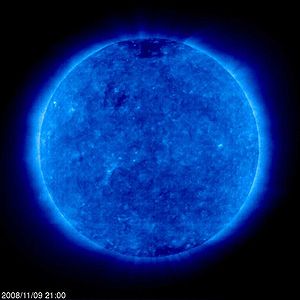
Researchers Adapt Classic Antennas to Harness More Power from the Sun
Some solar devices, like calculators, only need a small panel of solar cells to function. But supplying enough power to meet all our daily needs would require enormous solar panels. And solar-powered energy collected by panels made of silicon, a semiconductor material, is limited — contemporary panel technology can only convert approximately seven percent of optical solar waves into electric current.
Profs. Koby Scheuer, Yael Hanin and Amir Boag of Tel Aviv University’s Department of Physical Electronics and its innovative new Renewable Energy Center are now developing a solar panel composed of nano-antennas instead of semiconductors. By adapting classic metallic antennas to absorb light waves at optical frequencies, a much higher conversion rate from light into useable energy could be achieved. Such efficiency, combined with a lower material cost, would mean a cost-effective way to harvest and utilize “green” energy.
The technology was recently presented at Photonics West in San Francisco and published in the conference proceedings.
Receiving and transmitting green energy
Both radio and optical waves are electromagnetic energy, Prof. Scheuer explains. When these waves are harvested, electrons are generated that can be converted into electric current. Traditionally, detectors based on semiconducting materials like silicon are used to interface with light, while radio waves are captured by antenna.
For optimal absorption, the antenna dimensions must correspond to the light’s very short wavelength — a challenge in optical frequencies that plagued engineers in the past, but now we are able to fabricate antennas less than a micron in length. To test the efficacy of their antennas, Prof. Scheuer and his colleagues measured their ability to absorb and remit energy. “In order to function, an antenna must form a circuit, receiving and transmitting,” says Prof. Scheuer, who points to the example of a cell phone, whose small, hidden antenna both receives and transmits radio waves in order to complete a call or send a message.
By illuminating the antennas, the researchers were able to measure the antennas’ ability to re-emit radiation efficiently, and determine how much power is lost in the circuit — a simple matter of measuring the wattage going in and coming back out. Initial tests indicate that 95 percent of the wattage going into the antenna comes out, meaning that only five percent is wasted.
According to Prof. Scheuer, these “old school” antennas also have greater potential for solar energy because they can collect wavelengths across a much broader spectrum of light. The solar spectrum is very broad, he explains, with UV or infrared rays ranging from ten microns to less than two hundred nanometers. No semiconductor can handle this broad a spectrum, and they absorb only a fraction of the available energy. A group of antennas, however, can be manufactured in different lengths with the same materials and process, exploiting the entire available spectrum of light.
When finished, the team’s new solar panels will be large sheets of plastic which, with the use of a nano-imprinting lithography machine, will be imprinted with varying lengths and shapes of metallic antennas.
Read more . . .
Bookmark this page for “solar cell conversion” and check back regularly as these articles update on a very frequent basis. The view is set to “news”. Try clicking on “video” and “2” for more articles.







